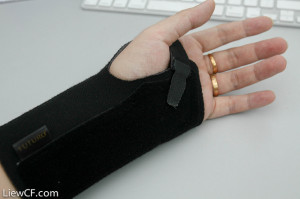The National Highways Traffic Safety Administration (NHTSA) conducted a national survey in 2012 to obtain data measuring the attitudes, knowledge, and behavior related to outdoor walking and bicycling. Among other things, the study specifically addressed safety issues and injury causality. The results showed that just under 30% of bicycle injuries are caused by collisions with cars:
| Six most Frequent Sources of Bicycle Injury | Percent |
|---|---|
| Hit by car | 29 |
| Fell | 17 |
| Roadway/walkway not in good repair | 13 |
| Rider error/not paying attention | 13 |
| Crashed/collision | 7 |
| Dog ran out | 4 |
Whenever you get on a bicycle, you run the risk of getting hurt in an accident. Oftentimes these accident-related injuries cannot be prevented, as they involve several factors outside of your control. Other common injuries obtained while riding, however, can be prevented. The following list of injuries was first reported by Active.com:
Tendinitis
Tendons are the thick cords that attach bones to muscles. Tendinitis occurs when the tendon becomes inflamed or agitated, commonly caused by repeated contact or a sudden impact.
Achilles Tendonitis
Your Achilles tendon, the largest tendon in your body, is particularly susceptible to injury when riding your bicycle. Injury can be caused by cycling too much or too hard after not having worked out in a while. Injury can also arise if your bike or shoes are not properly fitted. When your seat is too high, for example, your toe is constantly pointing down, causing your calf muscle to contract more than normal. This will eventually lead to strain and overuse.
Patellar Tendinitis
Your Patellar tendon sits just below the kneecap. Tendinitis can occur when your seat is too low. You can also get it by riding for too long.
You can tell that you are suffering from tendinitis when you have constant stiffness or pain (mild or severe) in your heel or knee area. The best way to take care of yourself when you recognize that you have tendinitis is to stay away from cycling for a little while until the pain goes away. Icing the affected area and taking Ibuprofen or other over-the-counter pain medications can also help in the healing and recovery process.
Broken Clavicle and Scaphoid
 While bike crashes place any of your bones at risk, they most commonly affect your extremities—particularly your arms. Your clavicle, or collarbone, and your scaphoid, or wrist bone, are specifically at risk in bicycle crashes as we tend to put our arms out to break our fall.
While bike crashes place any of your bones at risk, they most commonly affect your extremities—particularly your arms. Your clavicle, or collarbone, and your scaphoid, or wrist bone, are specifically at risk in bicycle crashes as we tend to put our arms out to break our fall.
Broken scaphoid bones can go unnoticed because the pain is not always as debilitating as with other breaks such as with your clavicle. Symptoms include swelling, pain, and immobility, and require immediate medical attention.
Broken bones cannot always be prevented. However, maintaining a hold on your handlebars as you fall may decrease the risk of breaking your clavicle or scaphoid because your whole body will absorb the impact, rather than your extremities.
Back pain
Back pain, much like tendinitis, is most commonly caused when your bike does not fit you properly or you spend too long cycling in an aggressive position. Aside from making sure your bike fits properly, strengthening your core is one way of reducing the risk of back injury.
As you take the proper precautions, you can greatly reduce your risk of obtaining a bicycle-related injury.
Photo courtesy of: Cheon Fong Liew
